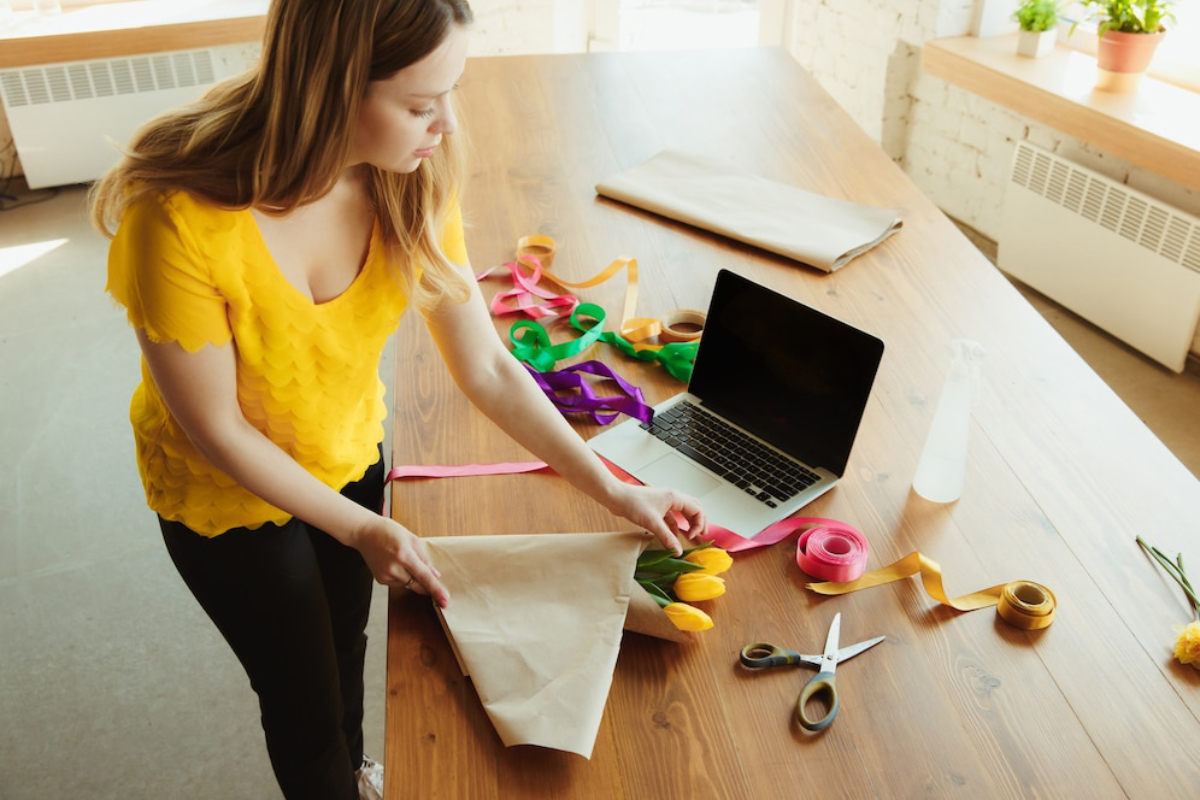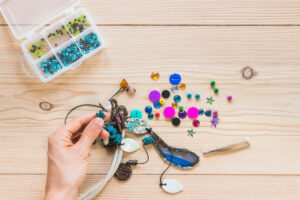The DIY & Crafts Blog

Starting an Upcycling Business: Turning Passion into Profit
In today’s world, sustainability and creativity go hand in hand. You’re in the right place if you have a passion for upcycling and want to turn it into a thriving business. Eco-business ideas are gaining momentum as more consumers seek environmentally friendly products. The market for upcycled goods is growing fast. It includes everything from handmade furniture to repurposed fashion.
Upcycling reduces waste and helps artisans make unique products that share a story. If you like fashion, home decor, or accessories, you need high-quality upcycled crafts. Upcycling businesses also need low startup costs, which are great for new entrepreneurs.
This guide shows you how to sell upcycled crafts. You’ll learn to build a brand and earn money from recycling projects. Plus, you’ll help make the planet greener.
Why Start an Upcycling Business?

1. Growing Demand for Sustainable Products
Consumers are more environmentally conscious than ever. They actively seek unique, upcycled products that align with their values. You attract eco-conscious customers by selling handcrafted, repurposed items. They are ready to pay for sustainable options. A 2023 study showed that more than 60% of shoppers like sustainable brands. This highlights the enormous potential for an upcycling business.
2. Low Startup Costs
An upcycling business is different from traditional ones. It usually needs less money to start. You can often use materials you already have. Many projects can be done with minimal investment, making it an accessible business model for beginners. You can save money by finding discarded items at thrift stores, garage sales, and donation centres. This way, you avoid spending thousands on raw materials.
3. Creativity and Personal Fulfillment
Transforming waste into lovely, valuable items lets you show your creativity and make a difference. Running an upcycling business is both rewarding and fulfilling. Many entrepreneurs love creating unique products. They enjoy when customers appreciate their work, primarily if it supports sustainability.
4. Profitability in Niche Markets
Handmade, eco-friendly products command higher prices due to their uniqueness and sustainability. With the proper marketing, you can sell your upcycled creations at a premium price. By branding your business effectively, you can differentiate yourself from mass-produced items and appeal to conscious consumers.
How to Sell Upcycled Crafts Successfully

1. Identify Your Niche
Specialising in a particular category helps establish your brand. Consider these profitable niches:
- Upcycled fashion – Handmade bags, jewellery, or repurposed clothing.
- Recycled home decor – Furniture, wall art, and plant holders made from reclaimed materials.
- Eco-friendly stationery – DIY notebooks, recycled paper crafts, and handmade journals.
- Unique accessories – Keychains, phone cases, and handbags from repurposed materials.
- Sustainable gift items – Custom-made, personalised upcycled gifts.
Choosing a niche allows you to target the right audience and refine your branding. Additionally, having a focused product line ensures consistency in marketing and makes it easier to establish credibility.
2. Source High-Quality Materials
To ensure your products are durable and aesthetically pleasing, source quality discarded materials. Some ways to find materials include:
- Thrift stores and flea markets
- Community swaps and donation drives
- Factory discards and textile remnants
- Old furniture and household items
- Scraps from previous projects
- Online marketplaces where businesses sell leftover materials
3. Develop Unique Product Designs
The success of an upcycling business relies on creativity. Aim for:
- Innovative designs that stand out
- Durable craftsmanship to enhance product longevity
- Functionality and aesthetic appeal
- A signature style that sets you apart from competitors
Staying ahead of trends and continuously innovating will set your business apart. Consider offering limited-edition collections or themed seasonal products to keep customers engaged.
4. Set Up an Online Presence
The key to making sales is visibility. Consider these platforms:
- Etsy – A popular marketplace for handmade, vintage, and upcycled items.
- Instagram & Pinterest – Ideal for showcasing visually appealing products.
- Your Website – A professional site with an online store helps establish brand credibility.
- Local Marketplaces – Selling at eco-friendly fairs, flea markets, or craft shows can attract customers.
Boost your listings with SEO strategies. Use keywords like “how to sell upcycled crafts” and “eco-business ideas.” This will help increase your visibility. Good product photos and interesting descriptions are key to attracting customers.
5. Pricing Your Upcycled Goods
Pricing should cover material costs, labour, and marketing while ensuring a reasonable profit margin. Consider:
- The time spent creating the product
- Cost of additional supplies like glue, paint, or sewing materials
- Market demand and competitor pricing
- Uniqueness and perceived value of the item
- Customisation or personalisation options
Consumers are willing to pay more for handcrafted and sustainable products, so position your products as high-quality rather than budget alternatives.
6. Marketing and Branding Strategies
Your brand should reflect sustainability and creativity. Tips for successful branding:
- Use eco-friendly packaging to reinforce your brand message.
- Share behind-the-scenes content on social media to showcase your creative process.
- Tell a story about your creations to connect with customers.
- Offer promotions and discounts for repeat customers.
- Collaborate with eco-friendly influencers or bloggers to expand your reach.
- Create engaging content like DIY tutorials and upcycling tips to position yourself as an expert.
7. Scaling Your Upcycling Business
As your business grows, consider:
- Expanding your product line to cater to different customer needs.
- Partnering with local artisans or businesses for collaborations.
- Offering workshops or DIY kits for customers who want to learn upcycling.
- Developing a subscription service for upcycled products to ensure recurring revenue.
Common Challenges and How to Overcome Them
1. Finding Reliable Materials
Solution: Build relationships with suppliers, thrift stores, and recycling centres. Join online groups where people give away free materials.
2. Managing Production Time
Solution: Streamline processes, batch-produce items, and prioritise bestsellers. Keep an organised workspace to improve efficiency.
3. Pricing Products Competitively
Solution: Research similar products, highlight uniqueness and adjust pricing based on demand. Offer tiered pricing for different budgets.
4. Standing Out in the Market
Solution: Focus on branding, storytelling, and quality craftsmanship. Add personalisation options to increase customer engagement.
The Future of Upcycling Businesses
With sustainability becoming a significant focus, upcycling businesses have immense potential. More people are choosing eco-friendly business ideas that match their values, so now is a great time to start an upcycling venture.
Learn to sell upcycled crafts, focus on unique items, and use online platforms. You can earn money from recycling projects and help the planet.
Conclusion: Turn Your Passion into a Profitable Business
Starting an upcycling business lets you show your creativity and help the environment. Whether you’re into fashion, home decor, or accessories, the market for repurposed goods is growing.
Are you ready to start your own upcycling business? Share your ideas in the comments and take the first step towards making money with recycling projects today!









